Novel Concept to Detect an Optimum Thixoforming Condition of Al-Al3Ni Functionally Graded Material by Wavelet Analysis for Online Operation
Abstract
:1. Introduction
2. Materials and Experimental Procedures
2.1. Preparation of Al-Al3Ni FGM Billet
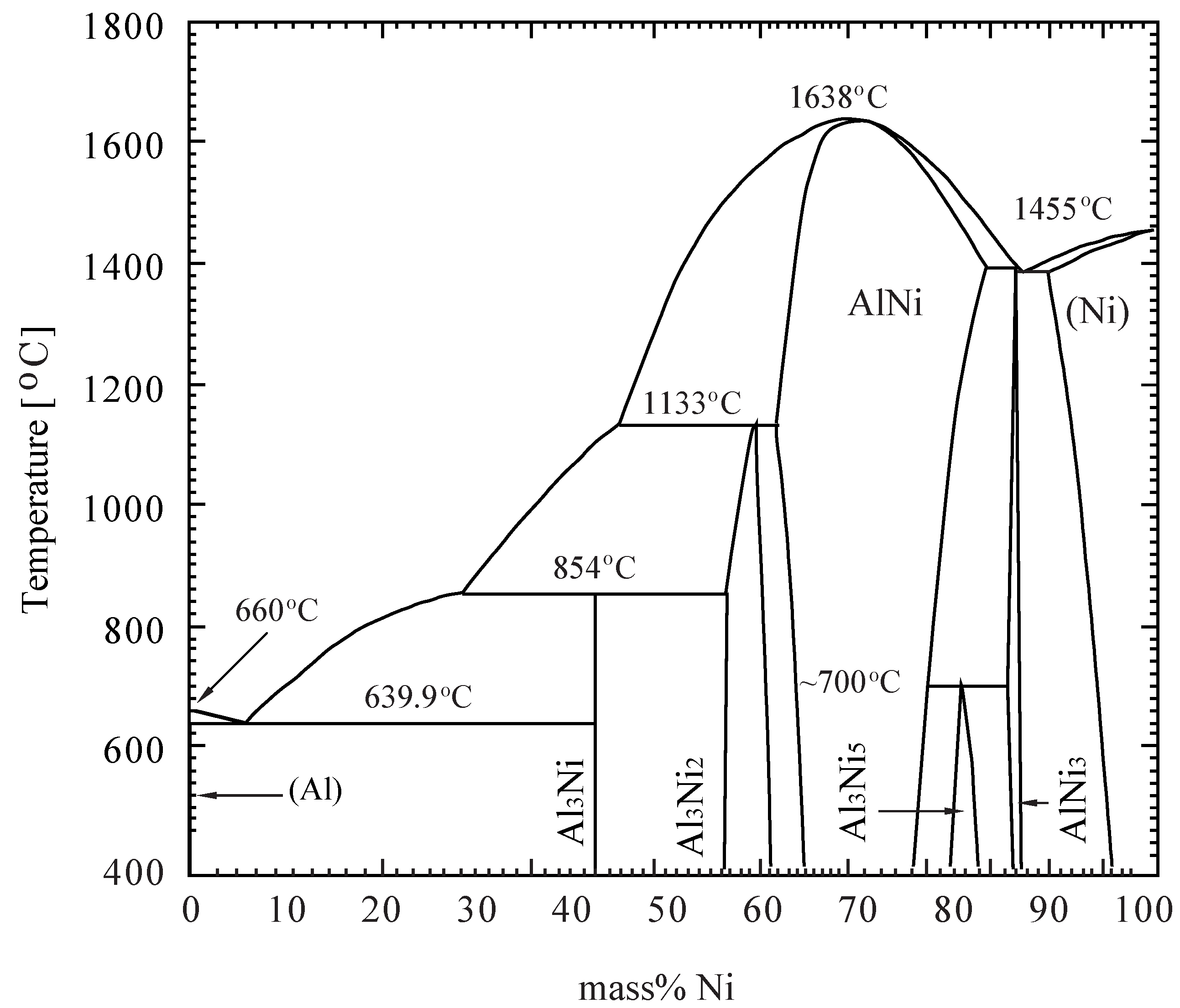
2.2. Setup for Near-Net-Shape Forming
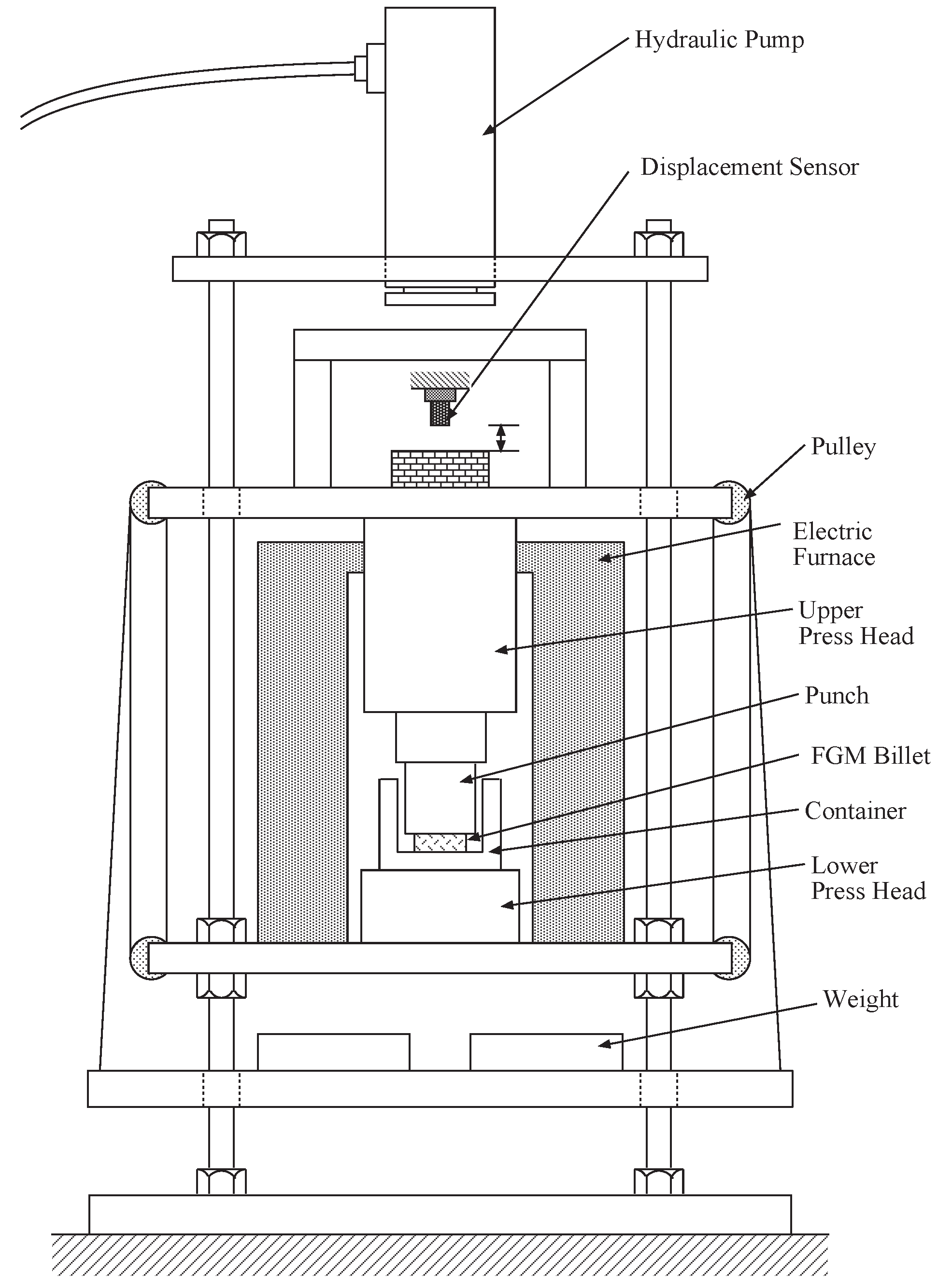
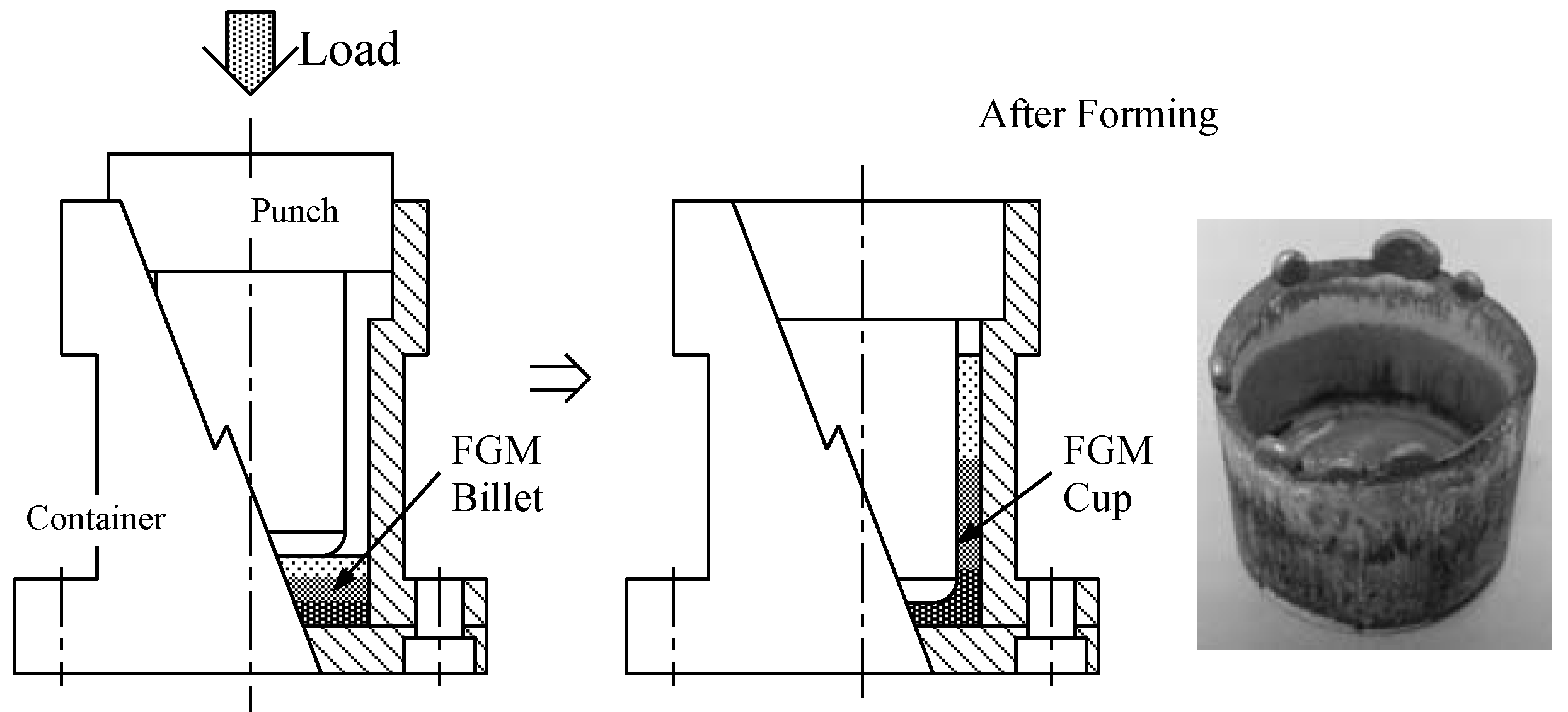
3. Application of Wavelet Analysis
3.1. Haar’s Wavelet
3.2. Detecting a Inflection Point of Signal
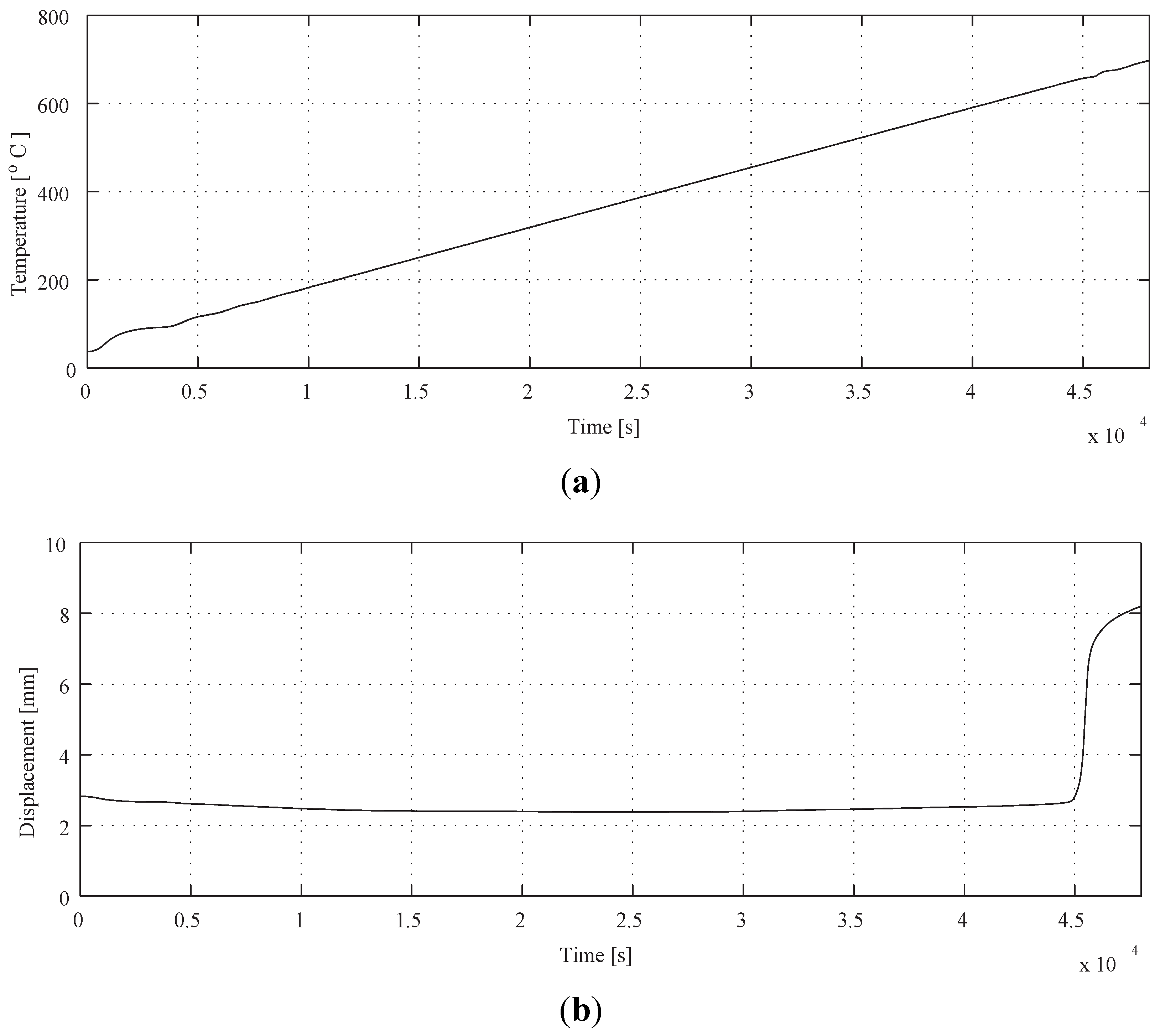
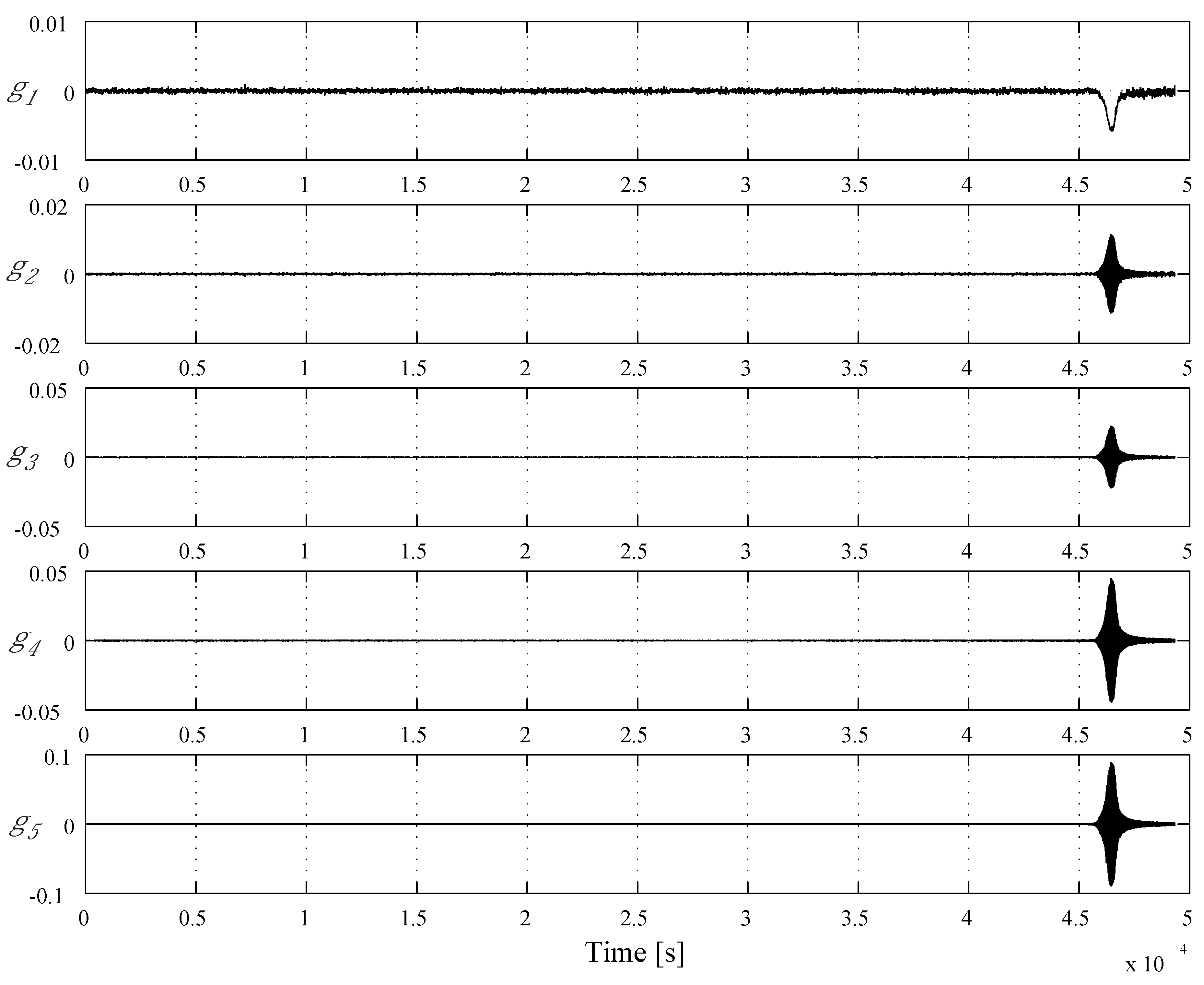
3.3. Determination of Threshold Value
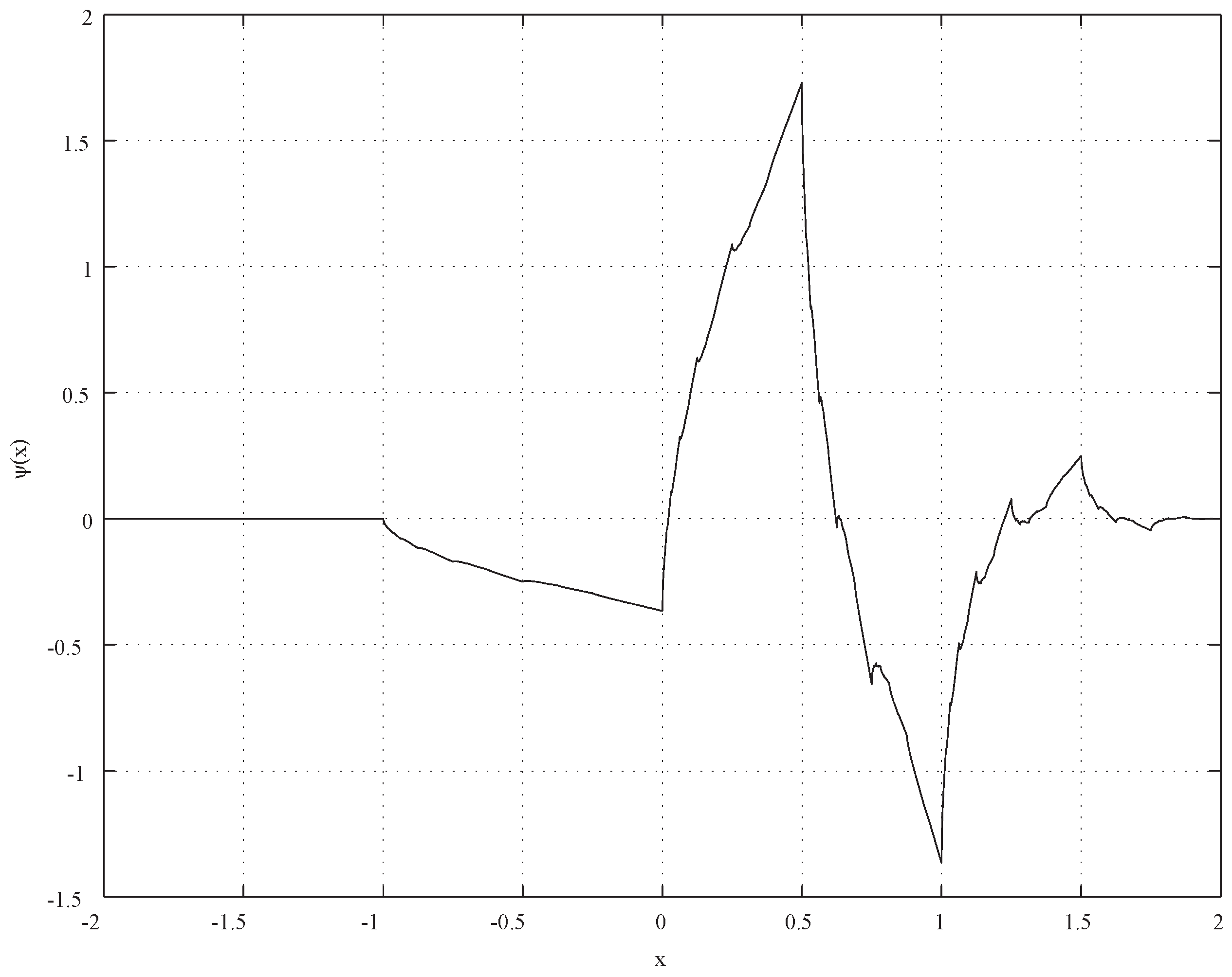
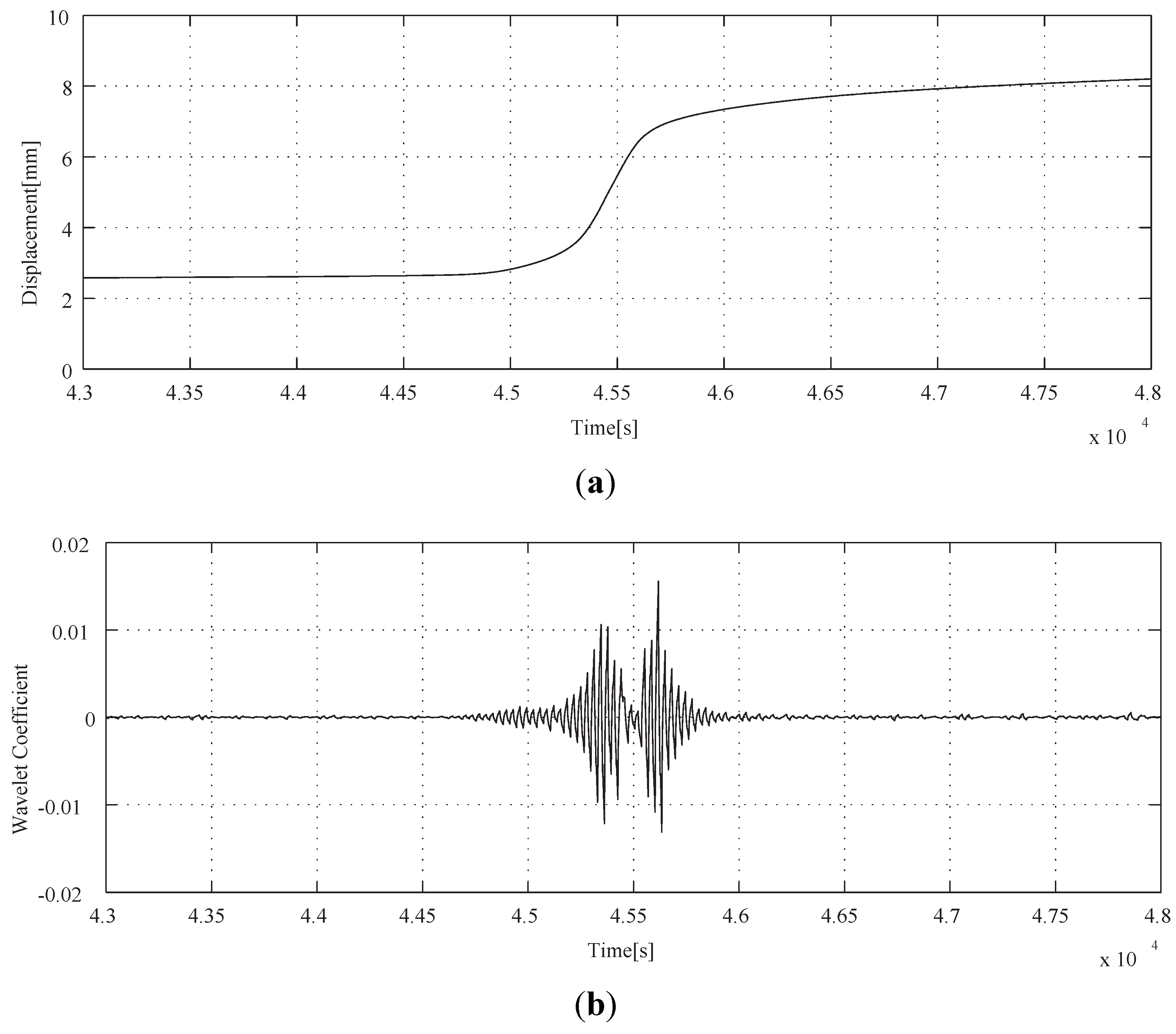
4. Operation of Thixoforming System
4.1. Process of Experiment
4.2. Results and Discussions
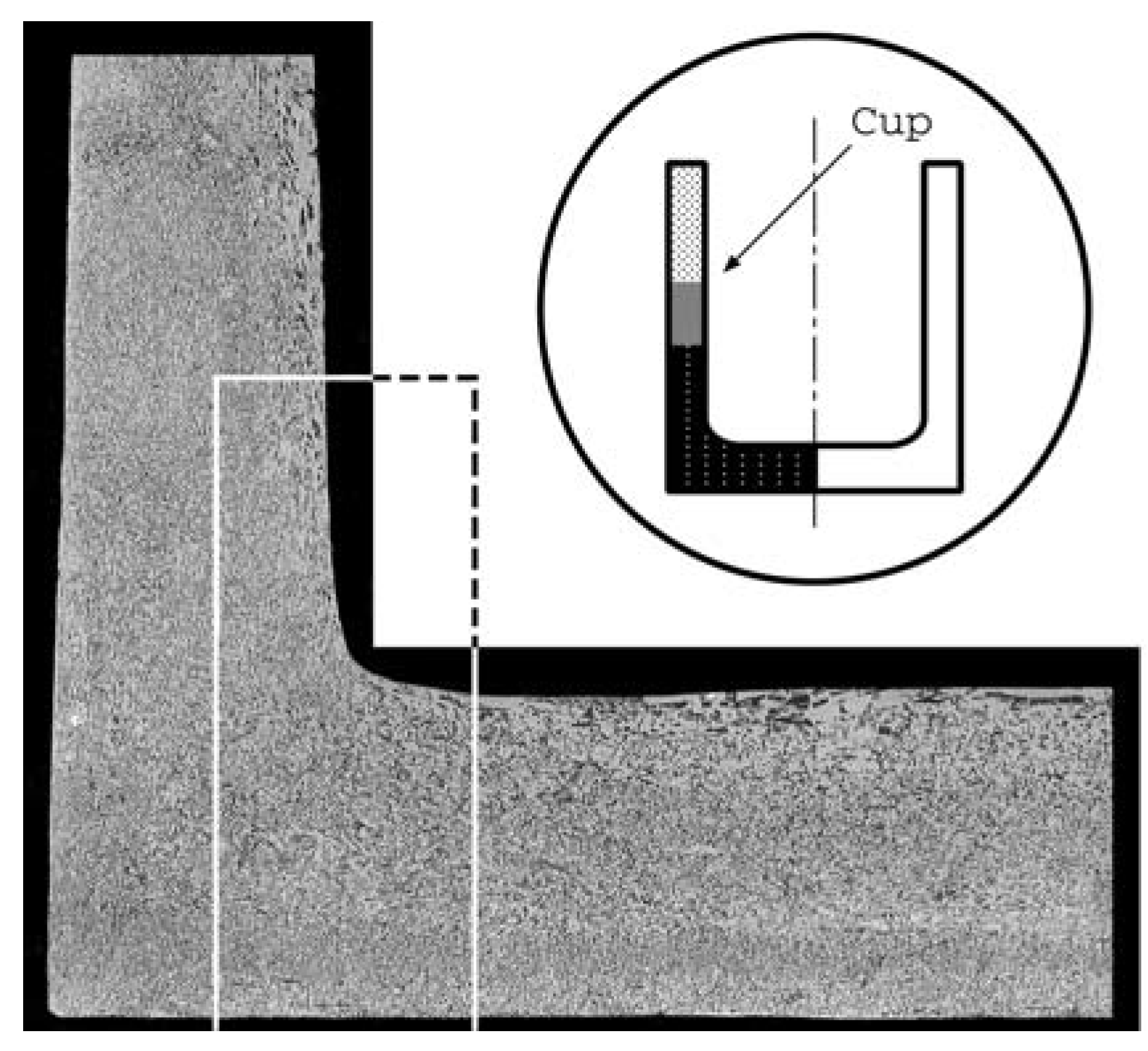
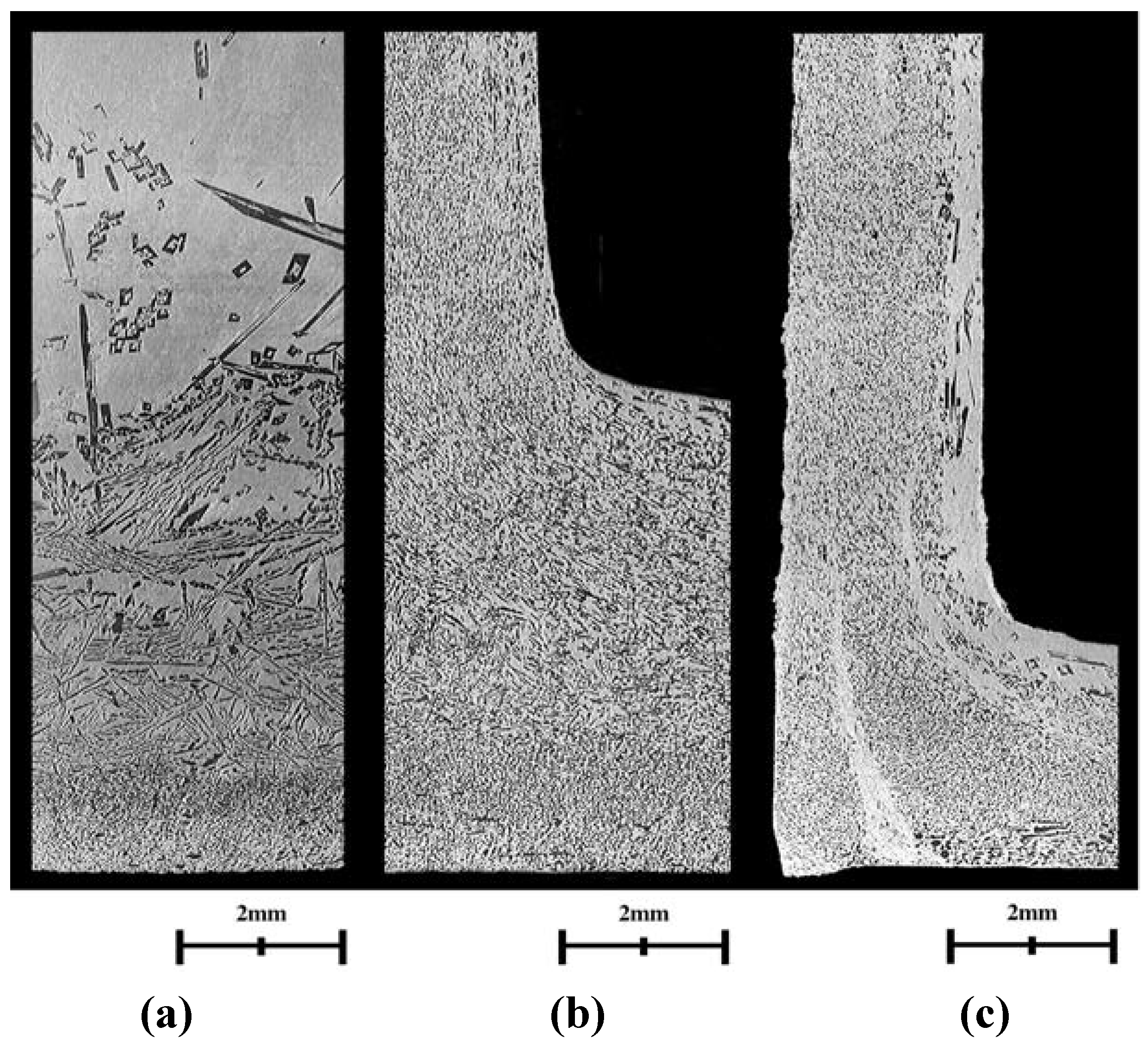
5. Summary
Acknowledgments
References
- Hirai, T. Functional gradient materials. In Materials Science and Technology, 3rd ed.; Brook, R.J., Ed.; VCH: Weinheim, Germany, 1996; Volume 17B, Part 2; pp. 293–341. [Google Scholar]
- Suresh, S.; Mortensen, A. Fundamentals of Functionally Graded Materials; IOM Communications Ltd.: London, UK, 1998. [Google Scholar]
- Miyamoto, Y.; Kaysser, W.A.; Rabin, B.H.; Kawasaki, A.; Ford, R.G. Functionally Graded Materials, Design, Processing and Applications; Kluwer Academic Publishers: Amsterdam, The Netherland, 1999. [Google Scholar]
- Fukui, Y. Fundamental investigation of functionally gradient material manufacturing system using centrifugal force. JSME Int. J. Ser. III 1991, 34, 144–148. [Google Scholar]
- Fukui, Y.; Takashima, K.; Ponton, C.B. Measurement of Young’s modulus and internal friction of an in-situ Al-Al3Ni functionally gradient material. J. Mat. Sci. 1994, 29, 2281–2188. [Google Scholar] [CrossRef]
- Fukui, Y.; Watanabe, Y. Analysis of thermal residual stress in a thick-walled ring of duralcan-base Al-Si functionally graded material. Metall. Mater. Trans. A. 1996, 27A, 4145–4151. [Google Scholar] [CrossRef]
- Fukui, Y.; Yamanaka, N.; Enokida, Y. Bending strength of an Al-Al3Ni functionally graded material. Composites 1997, 28B, 37–43. [Google Scholar] [CrossRef]
- Fukui, Y.; Okada, H.; Kumazawa, N.; Watanabe, Y. Near-net-shape forming of Al-Al3Ni functionally graded material over eutectic melting temperature. Metall. Mater. Trans. A. 2000, 31A, 2627–2636. [Google Scholar] [CrossRef]
- Matsuda, K.; Watanabe, Y.; Sato, H.; Kim, I.-S.; Fukui, Y. Evaluation of particle size and shape distributions in Al-Al3Ni functionally graded materials fabricated by a semi-solid forming process. Int. J. Mater. Product Tech. 2010, 39, 108–121. [Google Scholar] [CrossRef]
- Yamagiwa, K.; Watanabe, Y.; Fukui, Y.; Kapranos, P. Novel recycling system of aluminum and iron wastes-in-situ Al-Al3Fe functionally graded material manufactured by a centrifugal method. Mater. Trans. 2003, 44, 2461–2467. [Google Scholar] [CrossRef]
- Flemings, M.C. Behavior of metal alloys in the semisolid state. Metall. Mater. Trans. A. 1991, 22, 957–981. [Google Scholar] [CrossRef]
- Cheng, J-J.A.; Apelian, D.; Doherty, R.D. Processing-structure characterization of rheocast IN-100 superalloy. Metall. Mater. Trans. A. 1986, 17A, 2049–2062. [Google Scholar] [CrossRef]
- Ward, P.J.; Atkinson, H.V.; Anderson, P.R.G.; Elias, L.G.; Garcia, B.; Kahlen, L.; Rodriguez-Ibabe, J.-M. Semi-solid processing of novel MMCs based on hypereutectic aluminium-silicon alloys. Acta Materialia 1996, 44, 1717–1727. [Google Scholar] [CrossRef]
- Kopp, R.; Neudenberger, D.; Wimmer, M.; Winning, G. Thixoforging-basic experiment and optimized tool design. In Proceedings of the 5th International Conference on Semi-Solid Processing of Alloys and Composites, Golden, CO, USA, 23–25 June 1998; Bhasin, K., Moore, J.J., Young, K.P., Midson, S., Eds.; Colorado School of Mines: Golden, CO, USA, 1998; pp. 165–172. [Google Scholar]
- Strang, G.; Nguyen, T. Wavelet and Filter Banks; Wellesley-Cambridge Press: Wellesley, MA, USA, 1996. [Google Scholar]
- Donoho, D.L. De-noising by soft-thresholding. IEEE Trans. Inform. Theory 1995, 41, 613–627. [Google Scholar] [CrossRef]
- Rioul, O.; Vetterli, M. Wavelets and signal processing. IEEE Signal Process. Mag. 1991, 8, 14–38. [Google Scholar] [CrossRef]
- Akansu, A.N.; Medley, M.J. Wavelet, Subband and Block Transforms in Communications and Multimedia; Kluwer Academic Press: Amsterdam, The Netherland, 1999. [Google Scholar]
- Louis, A.K.; Maab, P.; Rieder, A. Wavelets Theory and Applications; John Wiley: Marblehead, MA, USA, 1997. [Google Scholar]
- Tanaka, S.; Okada, H. B-spline wavelet galerkin method for the problems of elstostatics. ICCES'07 2007, CD-ROM, 1403–1409. [Google Scholar]
- Ren, J.; Mao, O.; Li, J.; Lin, W. Wavelet analysis of dynamic behavior in fluidized beds. Chem. Eng. Sci. 2001, 56, 981–988. [Google Scholar] [CrossRef]
- Massalski, T.B. Binary Alloy Phase Diagrams, 2rd ed.; ASM International: Metals Park, OH, USA, 1990. [Google Scholar]
- Chui, C.K. An Introduction to Wavelets; Academic Press: Cambridge, MA, USA, 1992. [Google Scholar]
- Zigler, J.G.; Nichols, N.B. Optimum settings for automatic controllers. Trans. ASME 1942, 64, 759–768. [Google Scholar]
- Daubechies, I. Orthonormal bases of compactly supported wavelets. Commun. Pure Appl. Math. 1988, 41, 909–996. [Google Scholar] [CrossRef]
- Jen, C.K.; Liaw, J.W.; Chen, T.F.; Moreau, A.; Monchalin, J.P.; Yang, C.C. Ultrasonic evaluation of semi-solid metals during processing. Meas. Sci. Technol. 2000, 11, 1570–1575. [Google Scholar] [CrossRef]
- Henneberger, G.; Bauer, T.; Sebus, R. A new method determining the semi-solid state of aluminium alloys for thixoforming: analysis and calculation of the acoustic field. Compel Int. J. Comput. Math. Elec. 2000, 19, 651–656. [Google Scholar]
© 2011 by the authors; licensee MDPI, Basel, Switzerland. This article is an open access article distributed under the terms and conditions of the Creative Commons Attribution license (http://creativecommons.org/licenses/by/3.0/).
Share and Cite
Kumazawa, N.; Fukui, Y.; Nara, D. Novel Concept to Detect an Optimum Thixoforming Condition of Al-Al3Ni Functionally Graded Material by Wavelet Analysis for Online Operation. Materials 2011, 4, 2183-2196. https://doi.org/10.3390/ma4122183
Kumazawa N, Fukui Y, Nara D. Novel Concept to Detect an Optimum Thixoforming Condition of Al-Al3Ni Functionally Graded Material by Wavelet Analysis for Online Operation. Materials. 2011; 4(12):2183-2196. https://doi.org/10.3390/ma4122183
Chicago/Turabian StyleKumazawa, Noriyoshi, Yasuyoshi Fukui, and Daisaku Nara. 2011. "Novel Concept to Detect an Optimum Thixoforming Condition of Al-Al3Ni Functionally Graded Material by Wavelet Analysis for Online Operation" Materials 4, no. 12: 2183-2196. https://doi.org/10.3390/ma4122183



